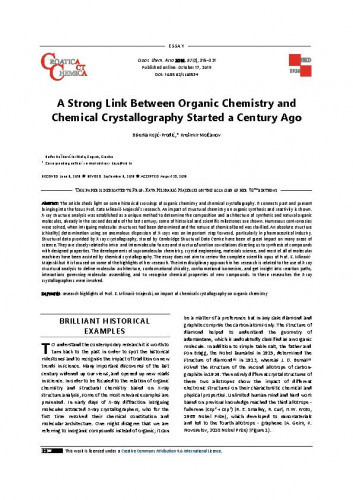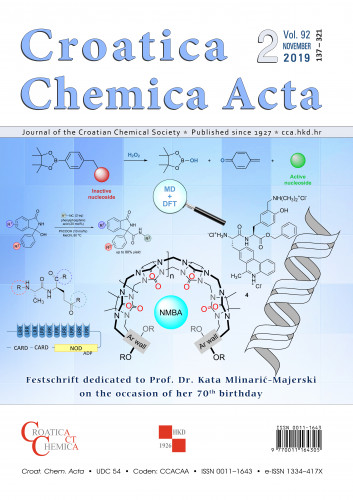The article sheds light on some historical crossings of organic chemistry and chemical crystallography. It connects past and present bringing into the focus Prof. Kata Mlinarić-Majerski’s research. An impact of structural chemistry on organic synthesis and reactivity is shown. X-ray structure analysis was established as a unique method to determine the composition and architecture of synthetic and natural organic molecules, already in the second decade of the last century; some of historical and scientific milestones are shown. Numerous controversies were solved, when intriguing molecular structures had been determined and the nature of chemical bond was clarified. An absolute structure (chirality) determination using an anomalous dispersion of X-rays was an important step forward, particularly in pharmaceutical industry. Structural data provided by X-ray crystallography, stored by Cambridge Structural Data Centre have been of great impact on many areas of science. They are closely related to intra- and intermolecular forces and structure/function correlations directing us to synthesis of compounds with designed properties. The developments of supramolecular chemistry, crystal engineering, materials science, and most of all of molecular machines have been assisted by chemical crystallography. The essay does not aim to review the complete scientific opus of Prof. K. Mlinarić-Majerski but it is focused on some of the highlights of her research. The interdisciplinary approach in her research is related to the use of X-ray structural analysis to define molecular architecture, conformational chirality, conformational isomerism, and get insight into reaction paths, interactions governing molecular assembling, and to recognise chemical properties of new compounds. In these researches the X-ray crystallographers were involved.
Sažetak

 Croatica chemica acta : 92,2(2019) / editor-in-chief Olga Kronja.
Croatica chemica acta : 92,2(2019) / editor-in-chief Olga Kronja.